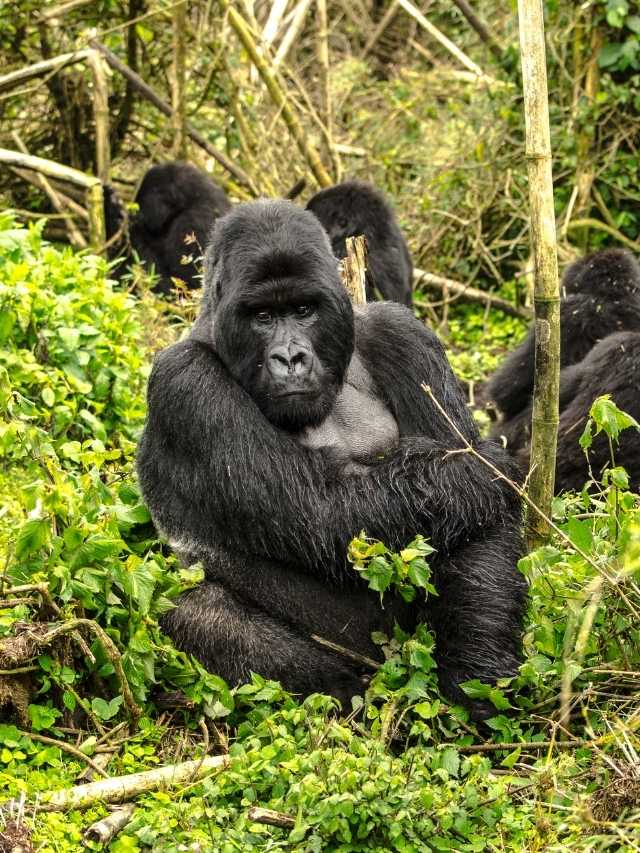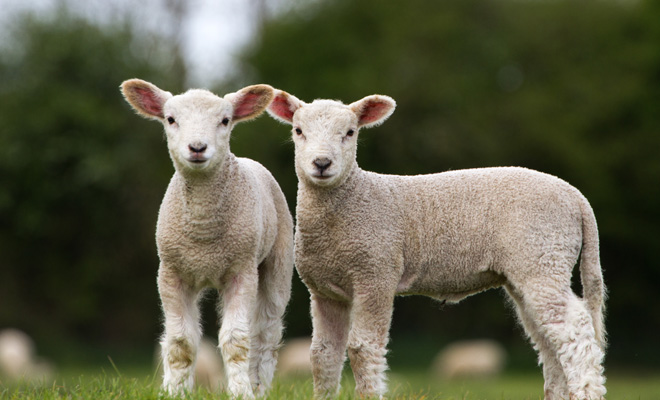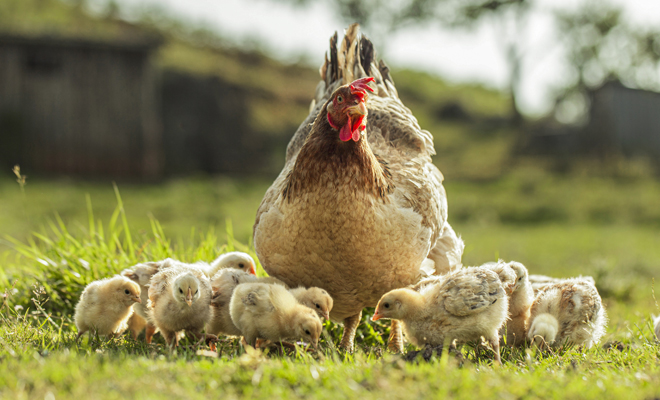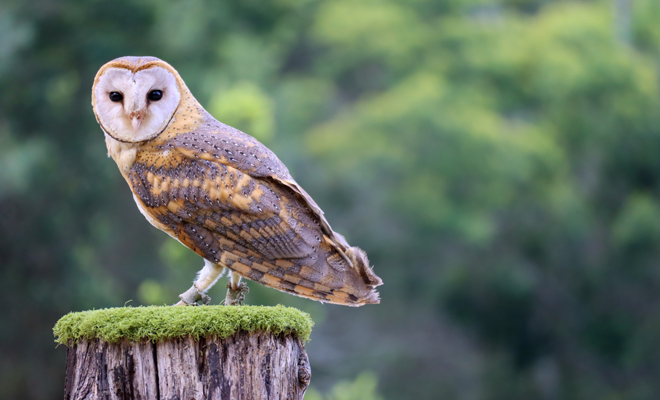Gorilla Dreams: Surprising Science Behind Dream
Gorillas, our closest relatives in the animal kingdom, possess a rich inner world that extends beyond the waking realm into the mysterious realm of dreams. In this exploration, we delve into the fascinating phenomenon of gorilla dreams, seeking to unravel the complexities of their sleeping minds and the profound implications they hold for our understanding of primate cognition, behavior, and evolution.
Dreaming in gorillas is a captivating aspect of their lives, offering a window into their thoughts, emotions, and experiences. As we embark on this journey, we will explore various facets of gorilla dreams, from the neurological processes that underpin them to the evolutionary origins that shape their content and patterns.
| Topic | Summary |
|---|---|
| REM Sleep in Gorilla Dreams | REM sleep is a crucial stage of the sleep cycle characterized by vivid dreaming experiences. In gorillas, REM sleep plays a significant role in facilitating dream occurrences, offering insights into their cognitive and emotional experiences during sleep. |
| Gorillas’ Cognitive Abilities | Gorillas possess a range of cognitive abilities, including problem-solving skills, language capabilities, and emotional intelligence. These cognitive processes influence the complexity and content of gorilla dreams, reflecting their inner thoughts and experiences. |
| Evolutionary Insights into Dream Patterns | Exploring the evolutionary origins of gorilla dream patterns provides insights into the adaptive functions of dreaming in these primates. By examining dream patterns across species, researchers can uncover the evolutionary continuity of dreaming and its significance in gorilla survival. |
| Environmental Influence on Dream Content | The natural environment, including habitat diversity, foraging strategies, predator threats, and climate variability, shapes the content and themes of gorilla dreams. Environmental factors contribute to the richness and diversity of gorilla dream experiences. |
| Implications for Understanding Primate Cognition and Behavior | Studying gorilla dreams deepens our understanding of primate cognition, behavior, and evolution. By unraveling the mysteries of gorilla dreams, researchers gain insights into the cognitive abilities, social dynamics, and adaptive strategies of gorillas and their primate relatives. |
The Origins of Gorilla Dreams
Dreaming in gorillas is a fascinating aspect of their behavior, rooted in both their evolutionary history and their complex social structures.
Evolutionary Context
Gorilla dreams can be traced back to their evolutionary lineage, dating back millions of years. Understanding the evolutionary significance of dreaming provides valuable insights into the adaptive functions it serves in gorilla populations.
Behavioral Observations
Observations of gorillas in the wild and in captivity reveal patterns in their dreaming behavior, shedding light on when and how frequently they experience dreams.
Social Dynamics
Gorillas’ social structures influence their dreaming patterns, with hierarchical dynamics, social bonds, and interactions impacting the content and emotional tone of their dreams.
Understanding the Gorilla Mind: A Closer Look
Gorillas possess complex cognitive abilities that contribute to their capacity for dreaming. By examining their cognitive processes and behaviors, we gain a deeper understanding of the gorilla mind.
Cognitive Complexity
Gorillas exhibit a range of cognitive abilities, including problem-solving, communication, and emotional intelligence. These cognitive capacities form the foundation for their dreaming experiences.
Social Intelligence
The intricate social structures within gorilla groups shape their thought processes and emotional experiences, influencing the content and themes of their dreams.
Emotional Landscape
Exploring the emotional world of gorillas offers insights into how their dreams may reflect their feelings, experiences, and relationships within their social groups.
Exploring the Neurology of Dreaming
Delving into the neurological mechanisms underlying dreaming in gorillas provides valuable insights into the brain processes involved in this phenomenon.
Brain Activity During REM Sleep
Studies of gorilla brain activity during REM (Rapid Eye Movement) sleep, the stage associated with dreaming, reveal distinct patterns indicative of dream experiences.
Neurotransmitter Systems
Investigating the role of neurotransmitters such as dopamine and serotonin in gorilla dreaming sheds light on the chemical processes that influence dream content and emotional tone.
Brain Regions Involved
Identifying specific brain regions activated during dreaming in gorillas helps pinpoint the neurological pathways responsible for generating and processing dream imagery.
Unraveling the Mystery: Why Do Gorillas Dream?
The question of why gorillas dream encompasses various theories and hypotheses that seek to explain the evolutionary, physiological, and psychological significance of dreaming in these remarkable animals.
Memory Consolidation
One theory suggests that gorilla dreams play a crucial role in consolidating memories and processing information gathered during waking hours, aiding in learning and adaptation.
Emotional Regulation
Dreaming may serve as a mechanism for emotional regulation in gorillas, allowing them to process and cope with stress, anxiety, and other emotional experiences encountered in their daily lives.
Social Bonding
The social nature of gorillas extends into their dream experiences, with dreaming potentially facilitating social bonding, communication, and the maintenance of group cohesion.
Evolutionary Advantage
Exploring the adaptive advantages conferred by dreaming offers insights into how this phenomenon contributes to gorillas’ survival, reproductive success, and overall fitness within their ecosystems.
The Role of REM Sleep in Gorilla Dreams
Understanding the significance of REM (Rapid Eye Movement) sleep in gorillas provides valuable insights into the nature and function of their dreams.
Definition of REM Sleep
REM sleep is a distinct stage of the sleep cycle characterized by rapid eye movements, heightened brain activity, and vivid dreaming experiences. Exploring how gorillas enter and navigate REM sleep sheds light on the neurological processes underlying their dreams.
Dream Recall during REM
Research indicates that gorillas, like humans and other primates, experience vivid dreams during REM sleep. Examining the relationship between REM sleep duration and dream recall in gorillas helps elucidate the role of this sleep stage in their dreaming experiences.
Memory Consolidation
REM sleep is believed to play a crucial role in memory consolidation, the process by which newly acquired information is integrated into long-term memory. Investigating how gorillas’ dreams during REM sleep contribute to memory formation and learning enhances our understanding of their cognitive abilities.
Dreaming Beyond Instinct: Gorillas’ Cognitive Abilities
Gorillas possess a range of cognitive abilities that extend beyond basic instinct, influencing the complexity and richness of their dreaming experiences.
Problem-Solving Skills
Studies have shown that gorillas exhibit remarkable problem-solving skills, demonstrating the ability to use tools, solve puzzles, and navigate complex social dynamics. Exploring the connection between cognitive problem-solving and dream content offers insights into the creative and adaptive nature of gorilla dreams.
Language and Communication
Gorillas communicate using a combination of vocalizations, gestures, and facial expressions, showcasing their linguistic abilities. Examining how language and communication skills influence the content and structure of gorilla dreams provides valuable insights into their cognitive processes.
Emotional Intelligence
Gorillas demonstrate emotional intelligence through their ability to recognize and respond to the emotions of others within their social groups. Investigating how emotional intelligence influences dream content and emotional experiences enhances our understanding of gorillas’ cognitive abilities.
Evolutionary Insights into Gorilla Dream Patterns
Exploring the evolutionary origins of gorilla dream patterns offers valuable insights into the adaptive functions served by dreaming in these primates.
Ancestral Behaviors
Gorillas’ dream patterns may reflect behaviors and experiences inherited from their evolutionary ancestors. Investigating similarities between gorilla dreams and those of their primate relatives sheds light on the evolutionary continuity of dreaming across species.
Environmental Pressures
The environmental challenges faced by gorillas, such as habitat loss, food scarcity, and predation, shape their dream patterns and content. Understanding how environmental pressures influence gorilla dreams provides insights into their adaptive strategies and survival mechanisms.
Social Dynamics
Gorillas’ dreams are influenced by the social structures within their groups, including hierarchical relationships, mating strategies, and territorial behaviors. Examining how social dynamics shape dream content enhances our understanding of the evolutionary significance of dreaming in gorillas.
How Environment Influences Gorilla Dream Content
The natural environment plays a significant role in shaping the content and themes of gorilla dreams, reflecting their ecological niche and behavioral adaptations.
Habitat Diversity
Gorillas inhabit diverse ecosystems ranging from tropical rainforests to montane forests, each with unique environmental characteristics. Exploring how habitat diversity influences dream content illuminates the adaptive responses of gorillas to their surroundings.
Foraging Strategies
Gorillas’ dream content may reflect their foraging strategies and dietary preferences, with dreams featuring familiar foods, foraging locations, and social interactions related to feeding behavior. Investigating the link between foraging ecology and dream content enhances our understanding of gorillas’ nutritional and social needs.
Predator Threats
The presence of predators such as leopards, chimpanzees, and humans poses a constant threat to gorillas’ survival, shaping their vigilance behaviors and defensive strategies. Analyzing how predator threats manifest in gorilla dreams provides insights into their adaptive responses to predation risk.
Climate Variability
Climate variability and seasonal changes influence gorillas’ habitat conditions, resource availability, and social dynamics. Examining how climatic factors impact dream content enhances our understanding of gorillas’ behavioral flexibility and resilience in response to environmental challenges.
Final Thought:
In our exploration of gorilla dreams, we have journeyed into the depths of the sleeping minds of these remarkable primates, uncovering a wealth of insights into their cognition, behavior, and evolution. From the neurological mechanisms that underpin dreaming to the evolutionary origins that shape its patterns, our inquiry has illuminated the complex interplay of factors that contribute to the rich tapestry of gorilla dreams.
Through our examination of REM sleep and its role in facilitating vivid dream experiences, we have gained a deeper appreciation for the physiological processes that govern gorillas’ nocturnal imaginings. By delving into the cognitive abilities of gorillas, we have discovered how their problem-solving skills, language capabilities, and emotional intelligence shape the content and complexity of their dreams, revealing the depth of their inner lives.
FAQs:
What is REM sleep, and why is it important in gorilla dreams?
REM (Rapid Eye Movement) sleep is a distinct stage of the sleep cycle characterized by heightened brain activity, rapid eye movements, and vivid dreaming experiences. In gorillas, REM sleep plays a crucial role in facilitating the occurrence of dreams, offering insights into their cognitive processes and emotional experiences during sleep.
How do gorillas’ cognitive abilities influence the content of their dreams?
Gorillas possess a range of cognitive abilities, including problem-solving skills, language capabilities, and emotional intelligence, which contribute to the complexity and richness of their dream experiences. These cognitive processes shape the content and themes of gorilla dreams, reflecting their inner thoughts, emotions, and experiences.
What insights do evolutionary perspectives offer into gorilla dream patterns?
Exploring the evolutionary origins of gorilla dream patterns provides valuable insights into the adaptive functions served by dreaming in these primates. By examining dream patterns and behaviors across species, researchers can uncover the evolutionary continuity of dreaming and its significance in the survival and reproductive success of gorillas throughout their evolutionary history.
How does the environment influence the content of gorilla dreams?
The natural environment plays a significant role in shaping the content and themes of gorilla dreams, reflecting their ecological niche and behavioral adaptations. Factors such as habitat diversity, foraging strategies, predator threats, and climate variability contribute to the richness and diversity of gorilla dream experiences, highlighting the intricate connections between gorillas and their surroundings.
What implications do gorilla dreams have for our understanding of primate cognition and behavior?
Studying gorilla dreams offers valuable insights into primate cognition, behavior, and evolution, deepening our understanding of the complex inner worlds of these remarkable creatures. By unraveling the mysteries of gorilla dreams, researchers can gain a greater appreciation for the cognitive abilities, social dynamics, and adaptive strategies of gorillas and their primate relatives.







